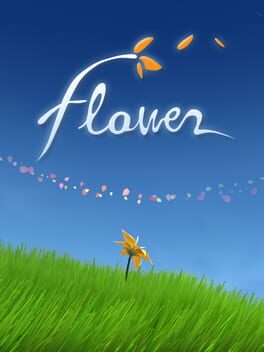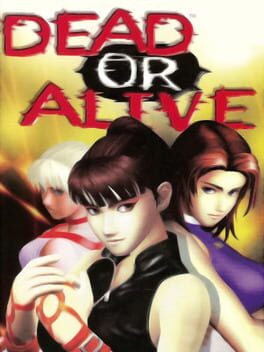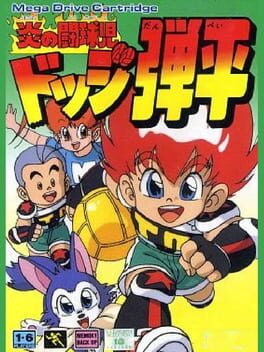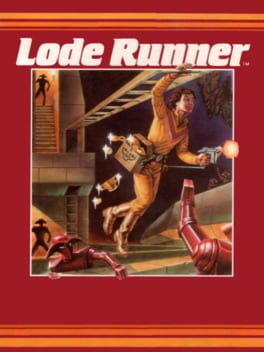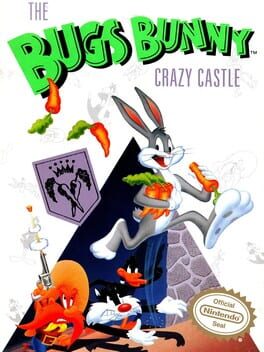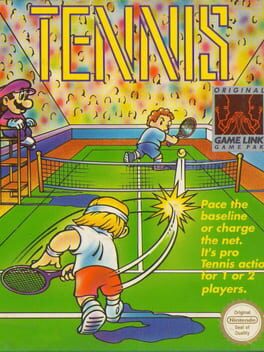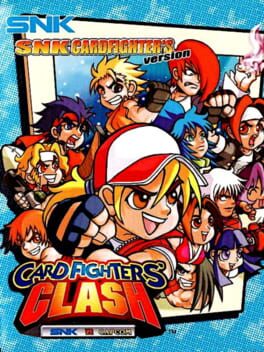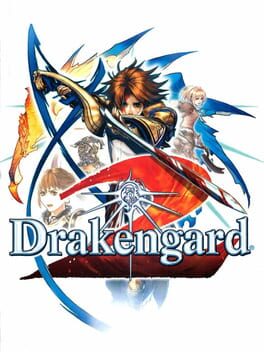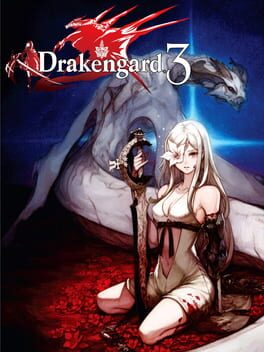2009
1996
1983
1989
Hyper Lode Runner, or ハイパーロードランナー, is a "sequel", in quotes, to the classic "Lode Runner", developed by Tose Software and distributed by Bandai. Officially, it was the first game released for the big Gameboy in 1989, and, well, it's certainly a game that exists...
As I mentioned, this isn't the first game in this franchise; in fact, it's the tenth. The first Lode Runner was released six years earlier on all possible and imaginable platforms and, in turn, was a "clone" of the also classic Space Panic.
Despite being a classic, nowadays many people don't even know that Lode Runner exists, although the franchise still exists in a way, with almost 30 games, the latest of which was released in 2017.
But back to the topic of the video, what is Hyper Lode Runner about? As a classic game, it's quite simple. The story is basically non-existent, with just a simple premise: you control a space soldier who fights an army of aliens to take back the gold they stole from humanity.
The gameplay revolves around this; the objective in each stage is to pick up all the scattered piles of gold and then escape. You can't actually defeat the aliens, only create holes in the ground so that they fall in and don't catch you. You also have to use the holes to escape from them or reach other places.
The gameplay is quite simple and, both in this version and in the classic one, which I also played to see what it was like, it's complicated due to the technology of the time. Sometimes you don't have much precision to create the holes, and the game has some problems with the artificial intelligence, which sometimes goes crazy for no apparent reason.
However, there's no denying that the game is addictive. Even with these problems, it finds a very good point in its simplicity; you get stuck in the game for hours without realizing it, trying to find other ways to get through the levels, which is a positive point.
As for the levels, the game has 50 of them, with different layouts and even innovations in the gameplay cycle at times. On the whole, however, they end up being quite repetitive. One positive point is that you can also create your own levels. Unfortunately, however, you can't save them, which makes this feature somewhat redundant.
Essentially, that's all I had to say about Hyper Lode Runner. It's a simple game with a few problems and it gets repetitive quickly, but it's a classic for a reason; it knows how to hold your attention.
My rating for it is: 2 stars.
As I mentioned, this isn't the first game in this franchise; in fact, it's the tenth. The first Lode Runner was released six years earlier on all possible and imaginable platforms and, in turn, was a "clone" of the also classic Space Panic.
Despite being a classic, nowadays many people don't even know that Lode Runner exists, although the franchise still exists in a way, with almost 30 games, the latest of which was released in 2017.
But back to the topic of the video, what is Hyper Lode Runner about? As a classic game, it's quite simple. The story is basically non-existent, with just a simple premise: you control a space soldier who fights an army of aliens to take back the gold they stole from humanity.
The gameplay revolves around this; the objective in each stage is to pick up all the scattered piles of gold and then escape. You can't actually defeat the aliens, only create holes in the ground so that they fall in and don't catch you. You also have to use the holes to escape from them or reach other places.
The gameplay is quite simple and, both in this version and in the classic one, which I also played to see what it was like, it's complicated due to the technology of the time. Sometimes you don't have much precision to create the holes, and the game has some problems with the artificial intelligence, which sometimes goes crazy for no apparent reason.
However, there's no denying that the game is addictive. Even with these problems, it finds a very good point in its simplicity; you get stuck in the game for hours without realizing it, trying to find other ways to get through the levels, which is a positive point.
As for the levels, the game has 50 of them, with different layouts and even innovations in the gameplay cycle at times. On the whole, however, they end up being quite repetitive. One positive point is that you can also create your own levels. Unfortunately, however, you can't save them, which makes this feature somewhat redundant.
Essentially, that's all I had to say about Hyper Lode Runner. It's a simple game with a few problems and it gets repetitive quickly, but it's a classic for a reason; it knows how to hold your attention.
My rating for it is: 2 stars.
Bugs Bunny Crazy Castle was released in 1989 by Kotobuki System, now known as Kemco, and is a port of the NES game of the same name. In fact, this is the American and European version of a Japanese Mickey game, which was very common at the time: bringing games from Japan, but changing the theme to appeal to a different audience. However, the original game, in this case, was MICKEY. I don't know if there's anything more American than that.
And another thing about this game is that it spawned a sort of franchise, with more games that we'll see in this series here.
But all right, back to the game, this is a Long Leg game where he has to rescue Honey Bunny, a character who disappeared after this game because she was kidnapped by Coyote, Patolino, Eufrazino and Frajola. That's the story here, actually, more of a premise than a story in itself, right?
And the gameplay cycle consists of you guiding Longleg through the levels with the aim of getting the 8 carrots scattered in each one without being caught by the villains. You can use certain objects to defeat them or get in their way, and that's all there is to the gameplay. You do this for 80 levels, 60 in the NES version, but increased here.
As much as this sounds like a repetitive task, and for some people it might be, I have to admit that for me it was very easy. The levels are very short and, although the difficulty of the game increases a lot along the way, you learn different strategies to get through each level, which gives you a great feeling of achievement.
I do think there could have been a few less levels, but if you think about the situation of those who played this game at the time, with many people not being able to afford several games at the same time, having this variety could even be considered a positive point.
For me, the only negative point here is the technical quality of the game. I don't know if it was the Game Boy's hardware or some programming glitch, but every time a stage has one or two more enemies than normal, or is a bit bigger, the game has some glitches. Everything starts flashing and jumping around, it's not something that gets in the way, but it might bother some players.
Basically, that's all I had to say about Bugs Bunny Crazy Castle. It's a simple game, but very addictive.
My rating for it is: 3 stars.
And another thing about this game is that it spawned a sort of franchise, with more games that we'll see in this series here.
But all right, back to the game, this is a Long Leg game where he has to rescue Honey Bunny, a character who disappeared after this game because she was kidnapped by Coyote, Patolino, Eufrazino and Frajola. That's the story here, actually, more of a premise than a story in itself, right?
And the gameplay cycle consists of you guiding Longleg through the levels with the aim of getting the 8 carrots scattered in each one without being caught by the villains. You can use certain objects to defeat them or get in their way, and that's all there is to the gameplay. You do this for 80 levels, 60 in the NES version, but increased here.
As much as this sounds like a repetitive task, and for some people it might be, I have to admit that for me it was very easy. The levels are very short and, although the difficulty of the game increases a lot along the way, you learn different strategies to get through each level, which gives you a great feeling of achievement.
I do think there could have been a few less levels, but if you think about the situation of those who played this game at the time, with many people not being able to afford several games at the same time, having this variety could even be considered a positive point.
For me, the only negative point here is the technical quality of the game. I don't know if it was the Game Boy's hardware or some programming glitch, but every time a stage has one or two more enemies than normal, or is a bit bigger, the game has some glitches. Everything starts flashing and jumping around, it's not something that gets in the way, but it might bother some players.
Basically, that's all I had to say about Bugs Bunny Crazy Castle. It's a simple game, but very addictive.
My rating for it is: 3 stars.
1989
1989
Tennis, or テニス, was originally released in 1984 and was ported to the Game Boy in 1989, which is what I'm going to talk about here.
It's a normal tennis game, without a lot of gimmicks or different modes, just the usual one-on-one game.
And like practically all sports games at the time, it's very basic and very... bad...
In the game you can walk and hit the ball, one button launches it faster and lower and the other launches it higher and slower, and that's all the strategy involved in the game, plus a lot of luck, plus the computer that sometimes simply becomes the best Tennis player in the world.
There's not much else to say about this game, the only notable thing about it is that Mario is the referee in it, which I thought was pretty funny when I saw it.
And my rating for the game is: 1 star.
It's a normal tennis game, without a lot of gimmicks or different modes, just the usual one-on-one game.
And like practically all sports games at the time, it's very basic and very... bad...
In the game you can walk and hit the ball, one button launches it faster and lower and the other launches it higher and slower, and that's all the strategy involved in the game, plus a lot of luck, plus the computer that sometimes simply becomes the best Tennis player in the world.
There's not much else to say about this game, the only notable thing about it is that Mario is the referee in it, which I thought was pretty funny when I saw it.
And my rating for the game is: 1 star.
2009
2005
2013
